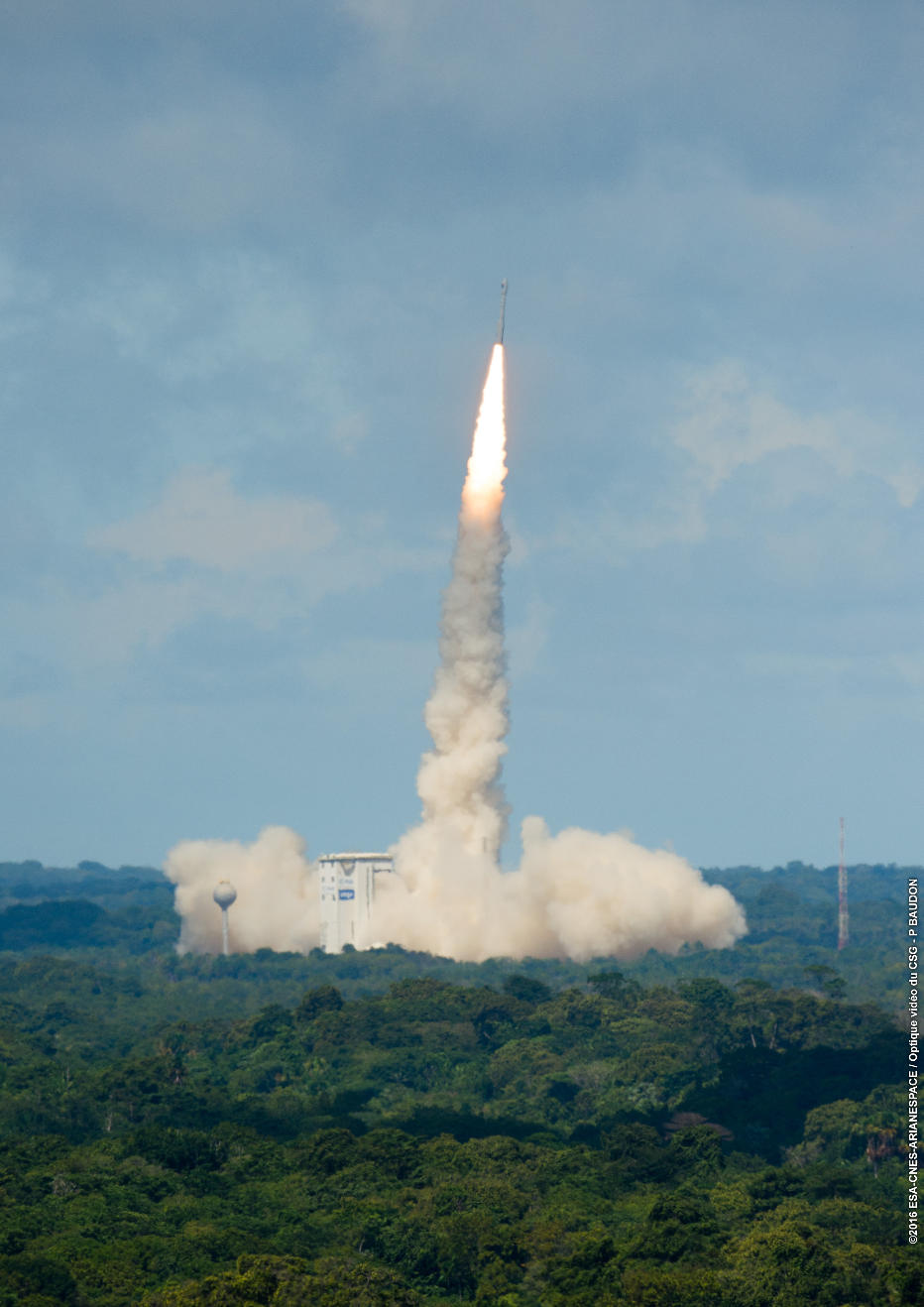The Vega lightweight launcher successfully launched the GÖKTÜRK-1 Earth observation spacecraft on 5th December from the Spaceport in French Guiana.
Departing at the exact liftoff time of 10:51:44 a.m. local time, Vega delivered the 1,060kg GÖKTÜRK-1 into a Sun-synchronous orbit at an altitude of approximately 700km.
During the initial phase of the mission – designated Flight VV08 in Arianespace’s launcher family numbering system – Vega was powered by its three solid propellant stages, followed by two burns of the bi-propellant upper stage, leading to separation of GÖKTÜRK-1 at just over 57 minutes after liftoff.
GÖKTÜRK-1 is Turkey’s first governmental satellite for Earth observation, designed to provide very high-resolution images for civilian and military applications. Telespazio is prime contractor for the GÖKTÜRK-1 programme, working under terms of an agreement with the Turkish Undersecretariat for Defence Industries (SSM).
Thales Alenia Space and its Turkish partners – including TAI A.S., Aselsan A.S., Tubitak Bilgem, Roketsan A.S. and TR Tecnoloji – built GÖKTÜRK-1 based on the PROTEUS spacecraft platform.
GÖKTÜRK-1 was the 145th satellite from Thales Alenia Space to be launched by Arianespace, with 11 more of this spacecraft manufacturer’s payloads in Arianespace’s order book for future missions.
Additionally, GÖKTÜRK-1 was the 60th Earth observation spacecraft launched by Arianespace, reinforcing its ability to serve the evolving market for orbital-based imaging, observation and surveillance.
In Arianespace’s final mission of the year, an Ariane 5 is scheduled to deploy two telecommunications satellites into geostationary transfer orbit: Star One D1, to be operated by Brazil’s Embratel Star One; and JCSAT-15, which was built for Japan’s SKY Perfect JSAT Corporation.

